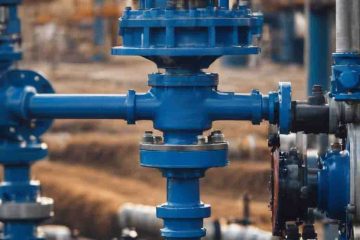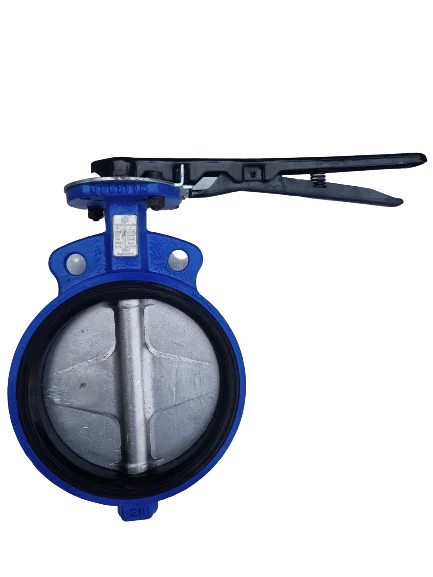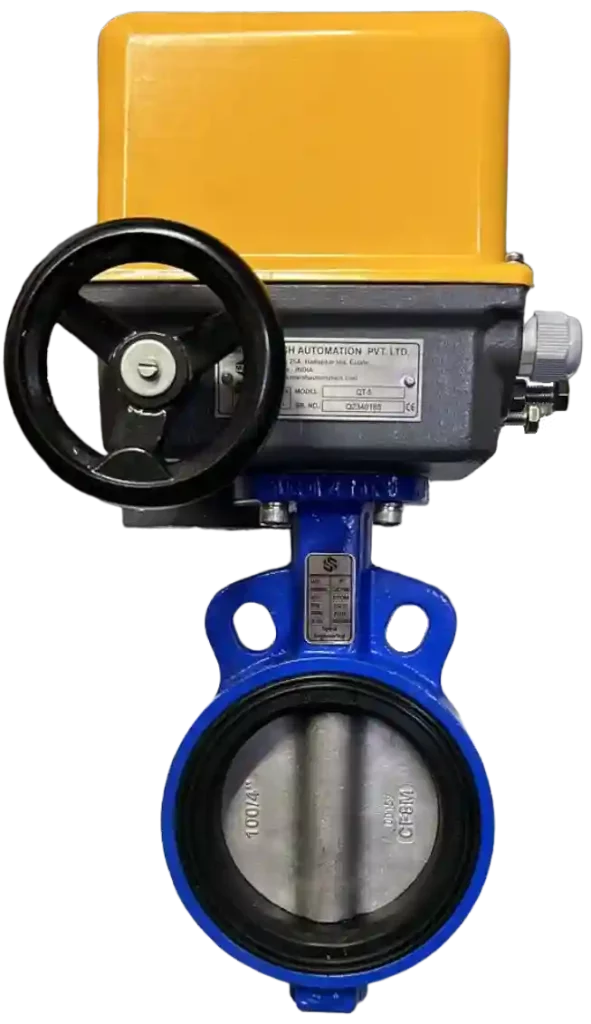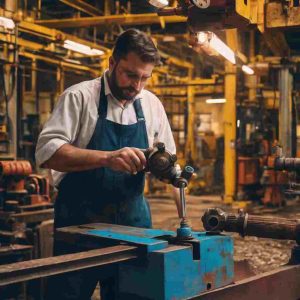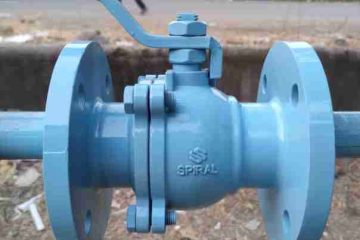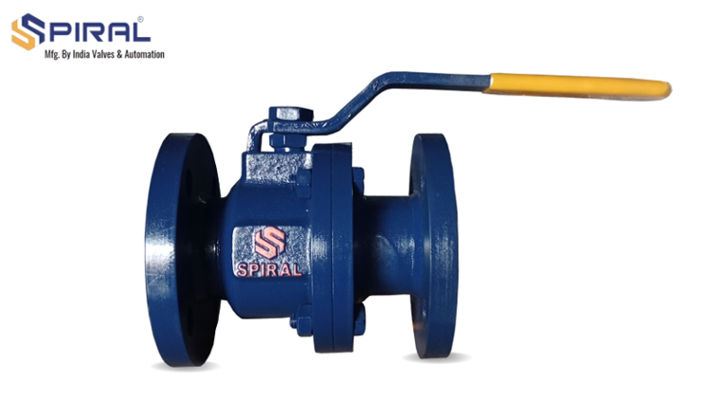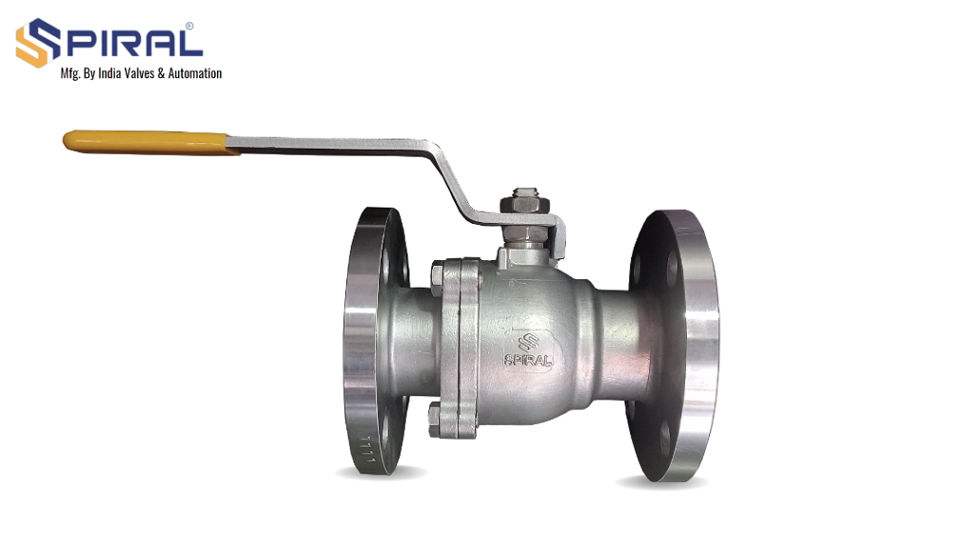Identifying Different Kinds of Water Valve Used in Water Distribution Networks
Valves are an essential element of a water distribution system. They are tasked with managing water flow, adjusting, and opening and shutting water flow. Although these valves may be small, they are powerful in regards to preserving pressure and supplying the entire distribution system. These small mechanical devices have a lot more power than they seem.
The utilisation of valves in water distribution systems can be manual or automated. Thanks to the development of technology, manufacturers are also producing electric valves that don’t require human effort. Regardless, valves are a significant element of the mechanical system that control the flow of water.
What Is The Purpose Of A Water Valve?
Industrial valves are a form of machinery used in water supply systems for regulating and ceasing the flow. They are able to adjust the pressure of water and in the event of an emergency, can be used to shut down the system. The name implies it, but a water distribution valve is responsible for the circulation of water in both commercial and residential settings.
Valves vary in shape and size, with different kinds utilised in water supply systems. Although each has its own distinct features, they all share one common factor: they are all essential for managing the water supply by opening, closing or controlling it.
The valve is a crucial component of the water distribution system; what makes it so important?
People who are unfamiliar with the functions and forms of valves often ask why they are so essential in water distribution systems. The answer is that such valves are of great importance in controlling the flow and pressure of the water. Thanks to them, water can be transferred safely through the pipelines and its pressure can be kept in check. To summarize, the following are the major reasons valves are so critical in a water distribution system:
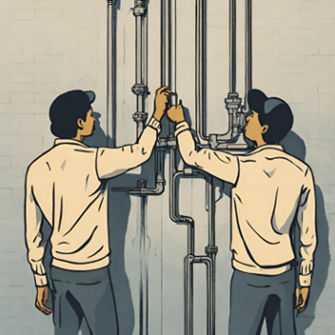
Maintenance of Pressure
Valves are essential for pressure maintenance in water distribution systems. If the pressure of the water is too high, valves are used to release air and control the flow, which prevents possible accidents due to bursting pipes. It can be said that valves also provide safety.
Ensuring Safety
Industries must have a valve in place to guarantee safety and continuity of fluid and gas flow, especially if they are operating in extreme temperatures. These valves are crafted from long-lasting materials, making them resistant to corrosion and deterioration from the fluids. Furthermore, when extreme pressure is encountered, the valve will relieve it and then return the flow to normal. In this way, safety is always ensured.
Without the right upkeep, the valves in charge of regulating the supply can cease to work, thus putting the security of the line in peril.
The Release of Air
The water distribution systems’ supply lines can experience an accumulation of air if the pressure reaches a certain level, which can cause the pipelines to split or, in a disastrous situation, burst. This is why valves are so significant in water distribution systems; they allow for the release of excessive air and can stop undesirable accidents from occurring.
No Worries Regarding Reversals
The thought of backflows in both industrial and residential settings is a source of terror. It can lead to the contamination of the entire water distribution system, an alarming prospect. A solution to this problem is valves, the small yet powerful mechanical devices that can stop backflows and maintain a sanitary flow in either a single or multiple directions.
Different Types of Valves Found In Water Distribution Systems Based On Design
The water supply system employs multiple varieties of valves, each with its own purpose. These valves are different in size, shape and function. Here is a list of the various designs of water distribution valves:
A Ball Valve Used in Industrial Settings
A representation of an industrial ball valve is displayed in the accompanying image. This type of valve is frequently used as part of large-scale industrial machinery.
The industrial ball valve is a frequently utilized valve in water distribution systems. This valve is named after the floating ball that controls the water’s passage. Within the valve, the ball is attached and has the ability to rotate 90°. This rotation can either be carried out automatically or manually.
When there is a sudden need to shut off water supply, industrial ball valves are the perfect option. The design of the valve quickly seals off the water flow, and this mechanism is highly efficient for throttling and controlling water pressure. For industrial applications, consider looking for a trunnion ball valve producer.
A type of valve, a Gate Valve is characterized by having a gate that moves up and down to allow or prevent flow through the valve.
A gate valve is the most widely used type of water distribution valve, and it is known for its unique design. This valve is equipped with small metal gates that feature a wedge shape and are responsible for regulating the water supply or stopping it abruptly. Gate valves are also referred to as shut-off valves because they are able to interrupt the water source almost instantly. These kinds of valves are usually found in industrial settings where a sudden water flow cutoff is necessary. The function of a gate valve is like a dam which regulates the flow of a river.
In spite of their diminutive size relative to other water distribution systems, gate valves are extremely capable and effective. With the help of these valves, water pressure can be continuously maintained, as the flow is controlled using an external knob that resembles a handwheel.
It is suggested by authorities that gate valves are perfect for places that have a direct water line. If put to use in a convoluted, more curved system, there is a high chance of the device becoming jammed frequently. Gate valves are suitable for both households and commercial settings equipped with extensive water distribution systems.
A Valve that is Plugged In
This type of valve is designed so that it can be plugged into a system. It is typically used to shut off or regulate the flow of a liquid or gas. The plug valve works by a plug that is inserted into a body, which is then operated by a handle, a stem, or an actuator. The plug is able to move to either open or close the valve, depending on the application.
The cylindrical design of plug valves earns them their name, due to the cone-shaped plug inside the valve. These valves are easy to use and can direct water flow to multiple channels at once for convenience. The plug inside is what enables the regulating or sudden halting of water flow.
Gasses do not pair well with plug valves, instead they are only fit for regulating the circulation of liquids. Certain professionals propose that plug valves can be used as a good alternative to ball valves in industrial sites.
A Valve That Aids in the Prevention of Backflow
Check valves are a type of valve used to ensure that fluid or gas can only flow in one direction within a system. This is done by allowing the flow in one direction while preventing backflow in the other. This is accomplished by a variety of mechanisms, such as the check valve’s weight, spring, or a diaphragm.
This type of valve is used to prevent backflow.
In industrial settings, check valves are often encountered when it comes to water distribution valves. They are best suited for supply lines that run in one direction only, and are the perfect choice if there is a risk of backflow.
The usefulness of check valves extends to both businesses and homes; they can obstruct any contamination of the fresh water by wastewater or drainage. Plus, there is no danger of backflow when the pressure is fluctuating. At residences, these valves are typically employed with sump pumps to ensure the circulation of liquid throughout the house.
A Valve for the Globe
A globe valve is a type of valve used to control the flow of fluids within a system. It consists of a movable disk-type element and a stationary ring seat in a generally spherical body. The motion of the disk against the seat allows for the regulation of flow.
A type of valve that is shaped like a globe is known as a Globe Valve.
The name of the globe valve is suggestive of the round design of its body. This distinct valve is well-suited for industrial needs in water systems. The movement of the liquid or gas is managed by a handwheel or rotating knob. Globe valves are not only suitable for residential water lines, but are also appropriate for industrial purposes.
An image of a butterfly valve can be seen below. This type of valve consists of a flat disc that is connected to a rod. When the rod is turned, the disc is rotated and causes a change in the flow of the material being controlled. The disc may be completely open or closed, depending on the degree of rotation.
What looks different from the traditional valves is the butterfly valve, which is widely used in industrial settings. The discs inside the valve spin to manage the movement of liquids; however, they are not suitable for gases.
It has been suggested that butterfly valves may not be suitable for high-pressure supply lines due to the rotating discs being vulnerable to harm in such circumstances. Thus, a butterfly valve supplier pays extra attention to creating the discs as the regulation of water flow is largely dependent on them. For additional information, you may wish to investigate a Wafer type butterfly valve.
Valve with a Needle
A type of control valve that has a needle-shaped disc is referred to as a needle valve. This device is used to adjust the flow of a liquid or a gas in a line. It is highly precise and can regulate the flow with great accuracy.
The moniker of the needle valve is derived from the long, thin spindle that adjusts the water flow. This valve is furnished with a rotatable stem that permits for more accuracy in controlling water flow, making it stand out from other valves. Needle valves are especially practical in industrial areas where the water pressure is very high, as they are perfect for throttling and regulating water flow.
Components Employed In Fabricating Water Distribution Valves
When making water valves, two primary materials are commonly used; these are metal and a strong type of plastic. During the production process, much attention is given to the materials, as they are a major factor in the valve’s functioning. Every internal component is taken into account and is given great consideration.
Manufacturers who are trusted understand the potential dangers associated with high-pressure water supply, and consequently give priority to the material they use to make their valves. To ensure sustainability, they will often opt for durable materials.
The majority of water distribution valves are constructed from materials such as stainless steel, cast iron, cast steel, ductile iron, bronze, brass, aluminum, or alloy steel, which have been found to be the most reliable, corrosion-free, and secure in keeping the supply lines secure.
Materials that are long-lasting, such as stainless steel, cast iron, and aluminum, help to prevent any rusting from occurring in the body or the internal components of valves. Additionally, metal alloys like cast steel and ductile iron are effective, non-corrosive, and non-reactive.
When it comes to the types of materials used in valve production, metals and alloys aren’t the only ones. High-grade plastics like Polyethylene, carbon fibres, Polypropylene, chlorinated PVC, Acetal Polymers, and Polyvinyl Chloride are also used. Rest assured that these valves are just as strong and capable as their metal counterparts. However, if the pipelines they are connected to transport fluids and gasses with high temperatures, plastic valves may not be the best option.
Elements That Make Up Valves In Water Delivery Systems
The components of a water distribution valve, even though it may be small, are essential for regulating the water flow. Most valves have the same components, which can be listed as follows:
- Handles and Handwheels- A regular feature of manually-operated valves, these two components are the most powerful as they are connected to the rest of the parts of the valve, and can open or shut off the water flow.
- Bonnet- A fundamental part of the valve, the bonnet provides structural support to the body and the internal elements such as the discs, stems and actuators.
- Body- Also known as the protective cover, the exterior of the valve is the body, which houses all the internal components. It helps make the valve strong and long-lasting.
- Stem- This integral part helps the valve to open and close, by supporting the rotating discs or gates and balls for regulation and throttling.
- Packing- Situated at the stem, this part provides protection and support, and helps reduce the possibility of leaks and damages.
- Seat- The surface on which the disc rotates, the seat provides the rotating discs a plane to work on.
- Disc- The interior element that controls the flow; by rotating, it circulates the water.
- Actuator- Found in automated or semi-automated systems, the actuator enables the valve to open and close the flow.
Rather than copying the text verbatim, it can be reformulated to remove any plagiarism by altering its structure without altering its contextual and semantic meaning. Ensuring that the markdown formatting is retained is essential.
It is an undeniable fact that the internet has drastically changed the way we communicate and interact with each other. No longer is it necessary to be in the same physical space as someone in order to communicate. In fact, the internet has opened up a realm of possibilities for people to interact with one another in ways that were previously impossible. Through the use of various forms of online communication, people can now communicate with each other regardless of their physical location. This has had a profound impact on the way individuals interact with one another, as well as on society in general.
Utilizing Industrial Valves For Water Distribution Systems
The utilization of industrial valves has a range of applications in water distribution systems. These mechanisms can be used to regulate, control, and monitor the flow of water within the system. Industrial valves are important in water distribution systems as they provide stability and ensure the safe delivery of water.
Systems that Distribute Water
In industrial settings, four distinct systems can use water distribution valves. The variety of valves employed in distribution systems includes:
Distribution Networks with no Future
It is possible to come across distribution networks that lack any further prospects or progression. Such systems are referred to as dead-end distribution systems.
Dead-end systems, which are also known as tree distribution systems, are the most popular type of distribution system. This consists of one main pipeline connected to numerous sub-branches. These sub-branches are then divided into many smaller supply lines.
Dead-end distribution systems are often utilized in residential buildings due to their uncomplicated design. This system is simple to operate and is ideal for circulating flow in a single building. Compared to others systems, it requires the least amount of cut-off valves and upkeep is minimal.
GridIron Systems
This company specializes in providing solutions for enterprise data centers and cloud computing. They are experts in helping customers build and maintain secure, reliable, and high-performance networks. GridIron Systems offers a variety of products to enable their customers to maximize the efficiency of their IT infrastructure.
Suitable for both residential and commercial settings, Gridiron systems have their principal pipelines running from the middle of the building. These setups have a variety of sub-branches that link perpendicularly. The unique regulation given by these systems is their interconnectivity and also the absence of any kind of dead ends. The water can come from numerous instructions all at once to rush out from one point.
Systems of a Radial Kind
Radial systems of water distribution are especially suitable for tall structures and locations with intense water pressure, allowing multiple parts of the building to get supplied with water expeditiously.
Circular Dispersion Networks
A ring distribution system is a type of arrangement where resources or services are dispersed in a circular pattern. This design is commonly used in telecommunications, where it is used to connect multiple users or locations to the same network. It is also used in power distribution systems, where it helps to ensure an even distribution of resources. Circular dispersion networks provide users with more reliable access to resources and can help to reduce the risk of power outages.
Sometimes referred to as a round supply system, in a ring distribution system, the water is routed from the source through a circular pattern. The piping is arranged in a way that keeps the liquid circulating in a circular path.
Factors One Should Take Into Account When Choosing Water Distribution Valves
When investing in water distribution valves, it’s important to consider various factors, such as the different types of valves used in water supply. Making the right choice can be difficult, so here are some crucial factors to consider:
Substances Employed
Manufacturers that are well-known put a lot of emphasis on the quality and material of a valve. This is the most important aspect to take into account when deciding which one to purchase. In industrial settings, valves are generally employed in systems that manage liquids with extreme temperatures, so the materials chosen for manufacturing them are of utmost importance.
Experts emphasize the importance of selecting the proper material when choosing valves, as certain substances can cause reactions, corrosion, or damage when exposed to certain fluids or gases. The most suitable materials for these applications are stainless steel, brass, copper, and aluminum, while plastic valves are a practical and economical choice for water supply lines.
The Intention
It is extremely important to identify the purpose for which the valves are being employed. This is because the kind of fluids or gasses that are going to be transported through the pipes can influence the selection of the valve. Therefore, one has to ensure that the valve they choose is suited to the type of distribution system.
The Objective Of Valves
Valves serve an essential role in many systems. They are used to manage the flow of liquids or gases, as well as regulate pressure and temperature. Valves may also be used to shut off the flow of a substance completely.
Valves come in many different varieties, such as those with floating balls to control the flow, discs, and metal gates. When selecting a valve, it is essential to consider the pressure of the main supply and if it is suitable for industrial use. If this is the case, extra attention must be paid to the choice. Not all standard water valves are suitable for this purpose.
Measurement of Valves
The size of the valve has to be taken into consideration, depending on the scale of the supply system. A small valve won’t work if the pressure and supply are great, and thus, larger and stronger valves are needed for larger systems.
Industrial valves have a different construction compared to those designed for residences. As the infrastructure for industrial operations is significantly larger, the valves must be created with greater precision to handle the large volume of water and pressure that they will be subject to.
Means Of Activation
The method by which something is activated can be referred to as the means of activation.
An additional significant factor to take into account is the mode of actuation, meaning how the valve is operated, is the system straightforward or intricate, and so forth. This mode of actuation is mostly dependent on whether the valves are to be manipulated manually or automatically.
The Necessary Maintenance
The type of maintenance that is needed for something to remain in good condition is essential. Different types of items require different kinds of maintenance in order to stay functional and efficient. Knowing what kind of maintenance is necessary for a particular object is important to ensure that it remains in top condition.
Factory owners must take into consideration regular checks as a critical element in providing a secure workplace for employees. This can be a source of stress for all. Each valve type varies in its maintenance needs, with some requiring minimal attention while others need more.
Atmospheric Heat
The temperature of the air is something that can vary greatly depending on the location, season, and other factors. This can lead to conditions ranging from warm to cold.
For industries with supply lines passing fluids with extreme temperatures, the temperature tolerance of the valves is of the utmost importance. To cope with these high temperatures and pressures, certain valves, like butterfly and globe valves, have been designed to handle such systems.
In Closing
Industries often face a dilemma when they have to decide which valves would be the most suitable for their water distribution systems due to the sheer amount of options available. Nevertheless, when the intended functions of industrial valves are compared, the choice becomes more straightforward. Although residential and industrial water valves may look identical, their functions are distinctly different.
For homes, the supply lines are relatively straightforward, but in industrial settings they can be intricate. Unlike in residential locations, where valves are connected to the water supply, industrial valves are specifically designed for their purpose. They may be part of distribution systems, chilled water systems, hot water systems, or wastewater systems. If you are interested in buying industrial water distribution valves in bulk or wish to learn more about them, please reach out to us here.
Please provide details regarding valve types, diameters, materials, end connections, and any other specifications that you have in mind…
The availability of electricity is a key factor in modern life. Without it, many of the activities we now take for granted would not be possible. Its presence is so vital that its absence can be a major inconvenience. Consequently, it is essential to ensure that enough electricity is available to meet our needs.


